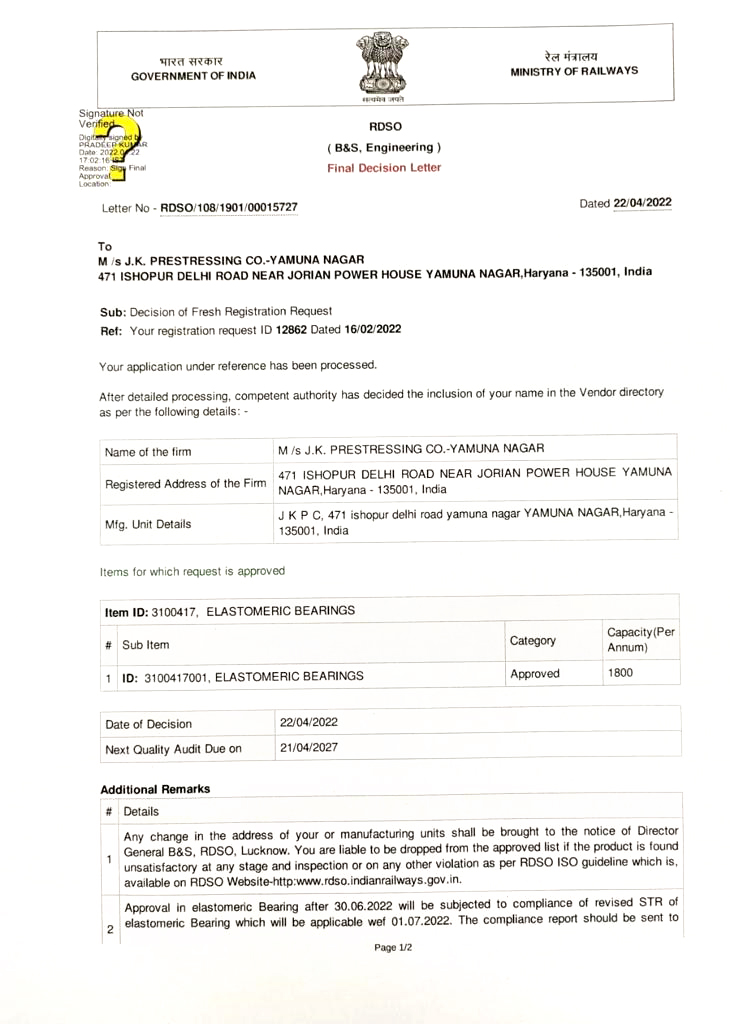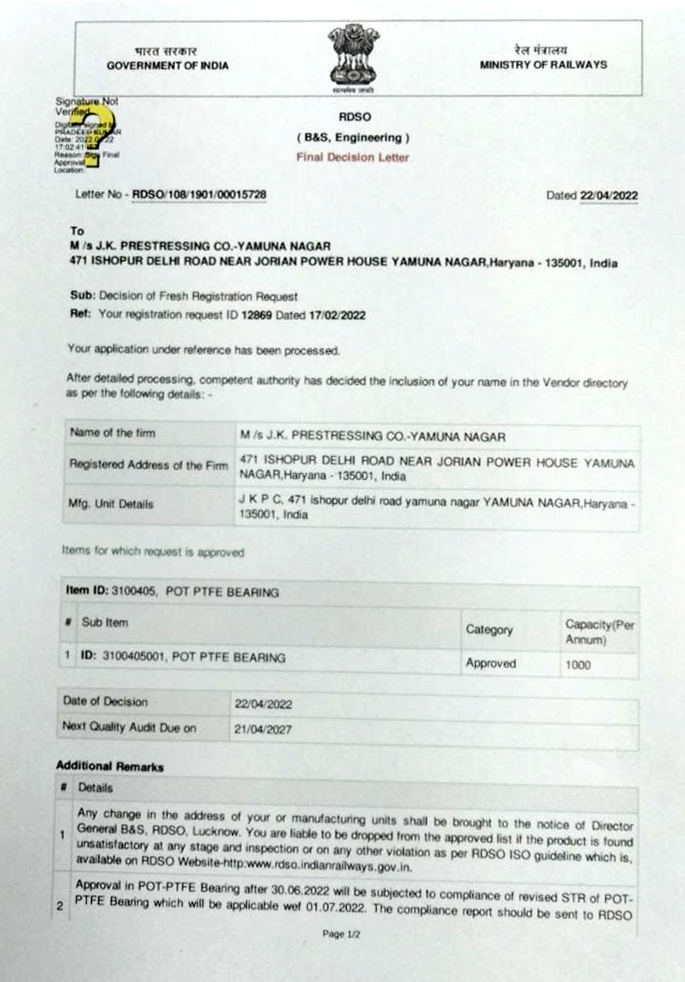JK Expasion Joint
When two structural elements are designed to move relative to one another, an expansion joint is usually required to seal the gap between the two elements while also accommodating their relative movements. Expansion joint in bridges are usually provided to allow for thermal expansion and contraction of the bridge deck, and to also allow for movement due to traffic actions on the bridge. The gap between the deck end and the abutment wall is frequently the case for bridges. On long viaducts or continuous bridges, however, additional joints may be required between deck portions to limit the movement at any one place.
Expansion joints are a point of weakness within a bridge due to its function, and there have been several occurrences of joints leakage, which can cause problems to the bridge. For example, corrosion of the bridge reinforcement has commonly occurred when de-icing salt-laden water has seeped onto bearing shelves or pier supports.
The required repairs are substantially more expensive than the joints initial capital cost, especially when traffic delays are included. It is therefore important to pay careful attention to the design, detailing and installation of bridge expansion joints in order to reduce the risk of future high repair costs for the bridge owner.
One of the main reasons for the rising of integral bridge design is the susceptibility of expansion joints. Integral bridge construction eliminates the requirement for expansion joints by attaching the deck directly to the abutments. The removal of expansion joints is often recommended where possible due to the problems they can cause.
An integral bridge, on the other hand, will have the same load effects and causes of movement as an expansion joint, however the effects of the movement will need to be considered in its design. However, Integral construction will not be a possibility for many bridge, especially those already built, and expansion joints will always be required.
Performance Criteria of Expansion Joints in Bridges
For an expansion joint to function well, it must possess a number of qualities. Some of them are listed below:
- For an expansion joint to function well, it must possess a number of qualities. Some of them are listed below:
- It should be watertight.
- It should provide a smooth ride and pose no danger to road user such as cyclists, pedestrians or equestrians.
- The joints skid resistance should equal that of nearby surfacing.
- Noise emissions from the expansion joint should be kept to a minimum, especially if it’s going to be used in residential areas.
- The joint should be easy to inspect and maintain.
Installation and maintenance
Installation and inferior materials are two of the most common causes of expansion joint failure. When installing expansion joints, take care and follow the manufacturer’s in instructions. Trained workers should be used, with special attention paid to identified weak spots such the interaction with the bridge deck waterproofing.
Bridge expansion joints should be inserted as late as feasible in the construction process to allow for shrinkage, creep, and settlement movements to occur before the expansion joint gap is filled.
Expansion joints should be built such all wearable pieces can be replaced or reset quickly, ideally during off-peak hours. Joint should be inspected regularly to ensure that they are still functioning correctly and have not blocked up or leaked. Because of the dangers of allowing water to spill onto other bridge parts, any blocked drainage should be cleaned as soon possible. To avoid the transmission of excessive stresses across the joint and sitting up of joints must be cleaned.



























































